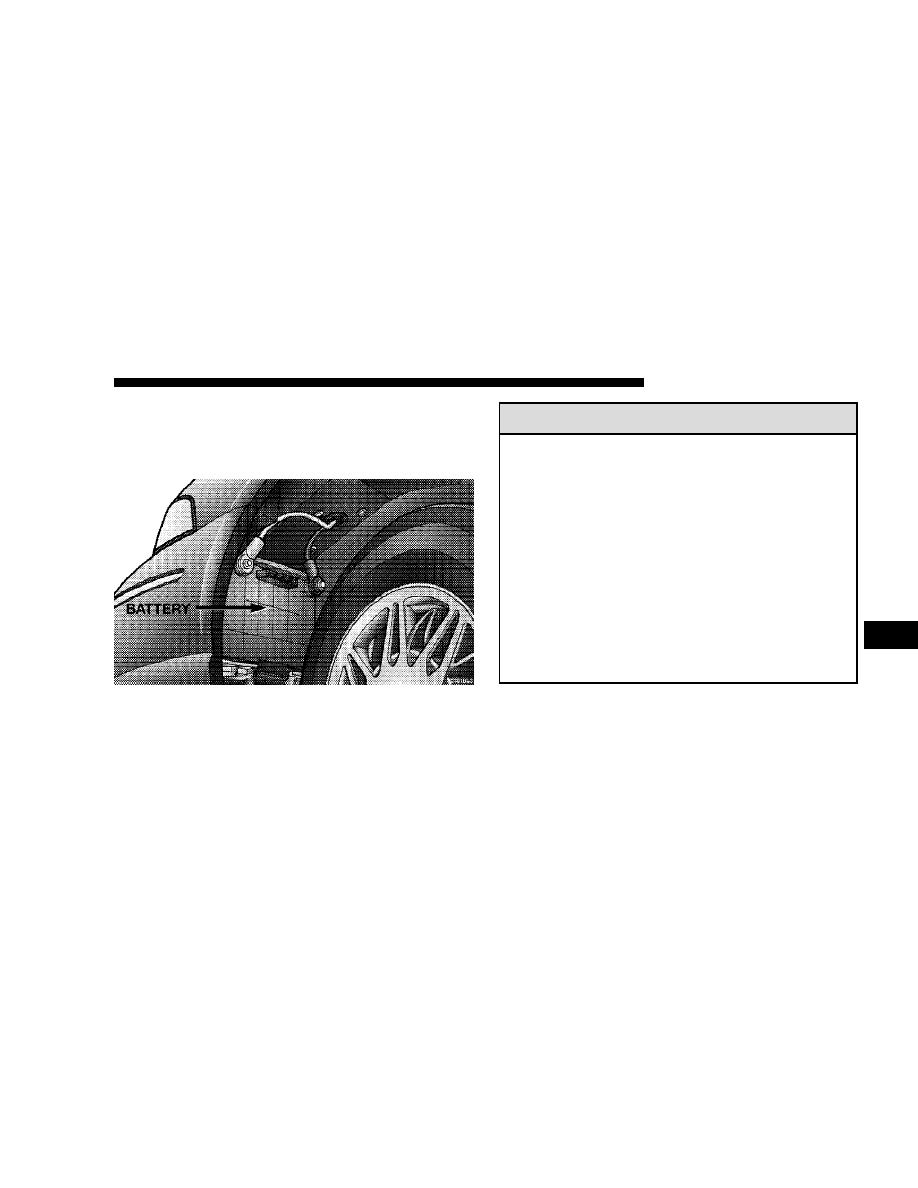Dodge Stratus (2006 year). Manual - part 14

NOTE:
The battery is stored in a compartment behind
the left front fender and is accessible without removing
the tire and wheel. Remote battery terminals are located
in the engine compartment for jump starting.
To access the battery, turn the steering wheel fully to the
right and remove the inner fender shield.
WARNING!
Battery posts, terminals and related accessories con-
tain lead and lead compounds. Wash hands after
handling. Battery fluid is a corrosive acid solution
and can burn or even blind you. Don’t allow battery
fluid to contact your eyes, skin or clothing. Don’t
lean over a battery when attaching clamps. If acid
splashes in eyes or on skin, flush the area immedi-
ately with large amounts of water. Battery gas is
flammable and explosive. Keep flame or sparks
away from the battery. Don’t use a booster battery or
any other booster source with an output greater than
12 volts. Don’t allow cable clamps to touch each
other.
Battery Location
MAINTAINING YOUR VEHICLE
217
7